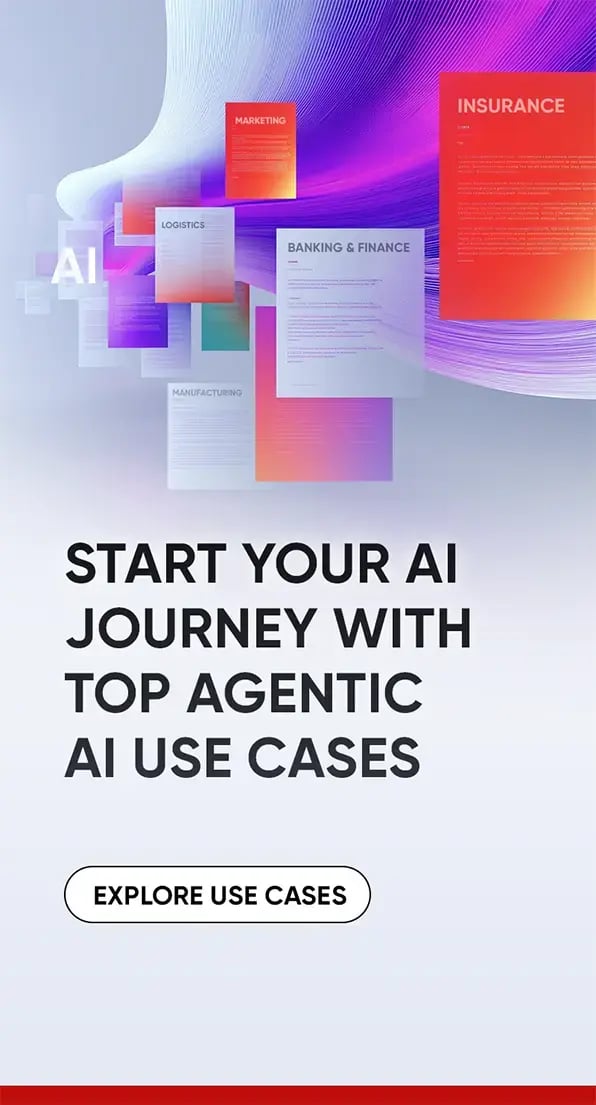From Data Overload to Smarter Decisions: How AI is Powering Financial Intelligence
by Praveen Singh, on Aug 20, 2025 9:27:55 PM
In the hyperconnected digital economy, Industries, Retails, Supply-chain, banks and financial institutions generate vast volumes of structured and unstructured data—credit histories, transactional logs, compliance records, loan & credit applications, and risk assessments—all flowing across disparate systems in real time. Yet, most organizations struggle with transforming this data into actionable, insight-driven intelligence that supports strategic decision-making.
According to Gartner’s 2024 survey, 58% of finance functions have adopted AI, yet many continue to operate within fragmented, siloed ecosystems. Without unified, interoperable data architectures, AI cannot perform to its full potential—consequently delaying business-critical insights and reinforcing reactive decision-making cycles.
Data Silos: The Hidden Bottleneck in Digital Finance
Legacy infrastructures, spanning core CFO office and banking systems, CRM platforms, risk engines, and compliance modules, often operate in isolation—each capturing data in its own proprietary format. This results in data silos that prevent organizations from building a consolidated, 360-degree view of customers, markets, and risk exposure.
The absence of integrated data environments inhibits not only cross-functional collaboration but also advanced analytics, leading to delays in insights and missed opportunities. To overcome this, CIOs and CFOs must prioritize data unification, aggregating, cleansing, and standardizing data pipelines across systems and departments—as a foundational step in their enterprise AI journey.
AI as a Catalyst for Market and Customer Intelligence
When fed with contextualized, harmonized data, AI transcends traditional analytics becoming an orchestration engine for predictive intelligence. Key strategic applications include:
- Behavioral Segmentation and Personalization: AI models analyze customer interactions and transaction histories to identify behavioral clusters, enabling lifecycle-based personalization and hyper-contextual product recommendations.
- Predictive Market Intelligence: Leveraging live economic indicators, transactional metadata, and market sentiment analysis, AI enables firms to anticipate market trends and build agile investment or pricing strategies.
- Customer Engagement Optimization: Through machine learning and agentic AI, financial institutions deliver real-time, hyper-personalized financial guidance, enhancing lifetime value and unlocking cross- and up-sell opportunities.
AI in Risk & Compliance: From Manual Audits to Autonomous Monitoring
Regulatory compliance continues to be one of the most cost-intensive and complex functions in the financial domain. Traditional manual approaches are no longer viable. AI helps reimagine compliance and risk management by:
- Detecting fraudulent patterns and AML risks in real time, through continuous anomaly detection and behavioral analytics.
- Automating KYC and regulatory reporting, using embedded policy engines that adapt dynamically to changing regulatory environments.
- Improving risk modeling by integrating alternative datasets—digital footprints, social data, psychographics—to forecast delinquencies and defaults with higher accuracy.
By minimizing compliance risks and operational costs, AI also safeguards reputation capital—a growing concern for risk-averse boards and regulators alike.
Strategic Priorities for CIOs Building an AI-First Finance Function
CIOs and CFOs must shift their focus from AI experimentation to strategic integration. A successful enterprise-wide AI roadmap must include:
- Data Infrastructure Modernization: Adopt cloud-native, API-first data ecosystems that enable real-time ingestion, transformation, and orchestration of financial data.
- Governance & Explainability: Build frameworks for ethical AI, ensuring transparency, auditability, and traceability of algorithmic decisions across risk, lending, and compliance functions.
- Change Management & Talent Enablement: Cultivate a data-literate workforce, embed AI capabilities into finance operations, and foster continuous learning across business and IT units.
Ultimately, AI must not exist as a standalone project, it must become a core fabric of enterprise decision-making.
Datamatics: Architecting the AI-Enabled Financial Enterprise
At the forefront of this transformation is Datamatics, a digital technologies company enabling banks and financial institutions to unlock enterprise-wide value from AI. Its flagship platform, FINATO, seamlessly fuses AI, intelligent automation, analytics, and compliance to power smarter, faster decisions.
From accelerated credit approvals to real-time fraud detection, and from improved cash flow predictability through continuous learning to reduced DSO through intelligent collections, Datamatics helps clients achieve measurable business impact.
Agentic AI as a Finance Multiplier: FINATO applies agentic AI principles to suggest and orchestrate financial decisions across the O2C lifecycle, elevating efficiency and customer experience simultaneously.
Intelligence is the New Currency
In an era defined by data abundance and attention scarcity, intelligence, not information, is the differentiator. The most successful financial institutions will not be those that simply collect more data, but those that turn it into real-time, intelligent action.
For forward-thinking CIOs and CFOs, AI is not just a technology initiative; it is a strategic imperative to lead in a data-defined future.

















